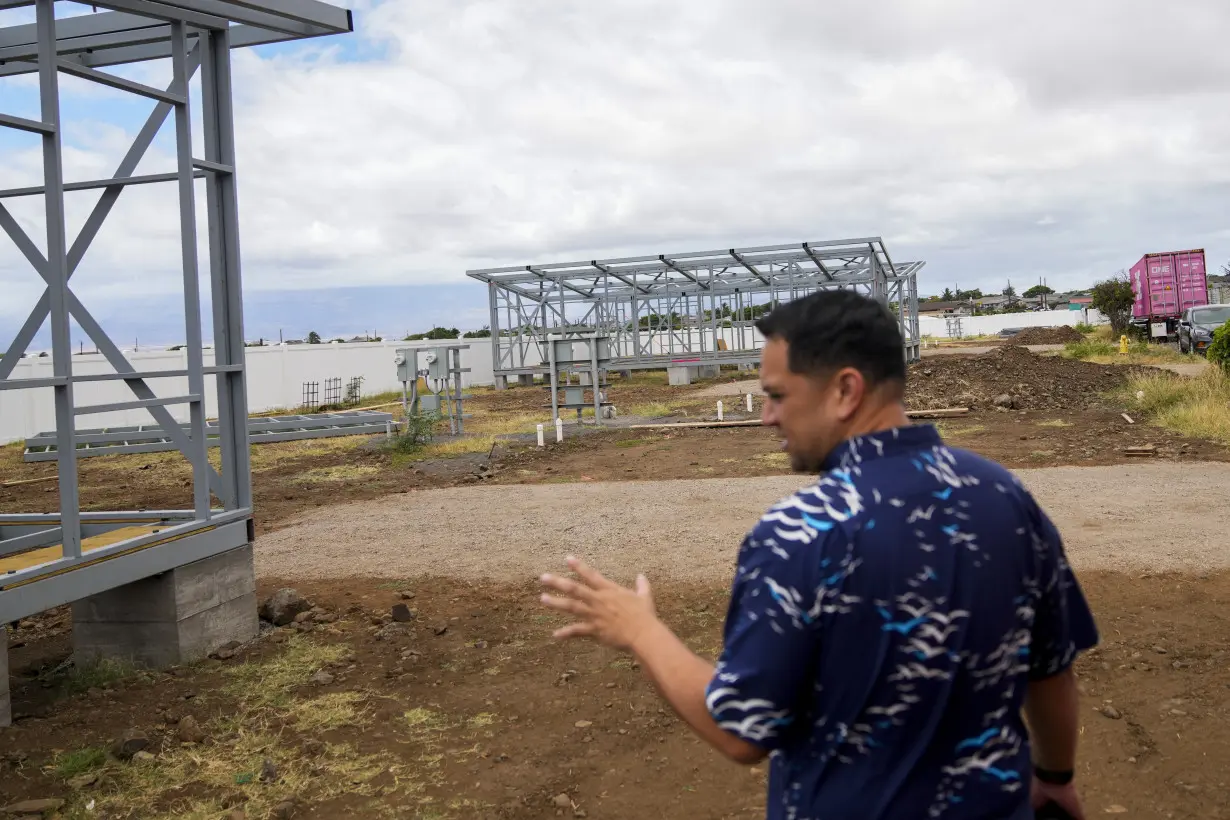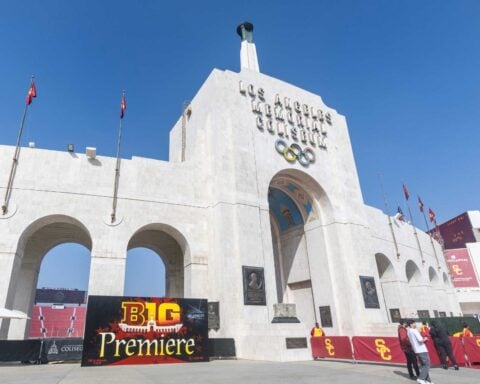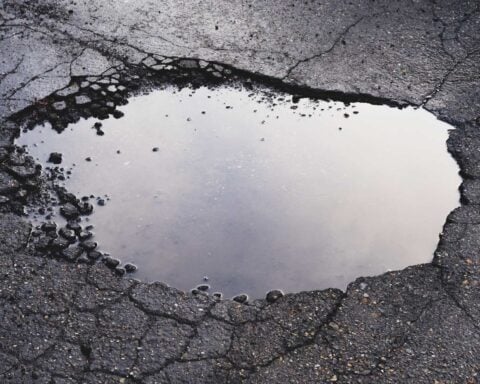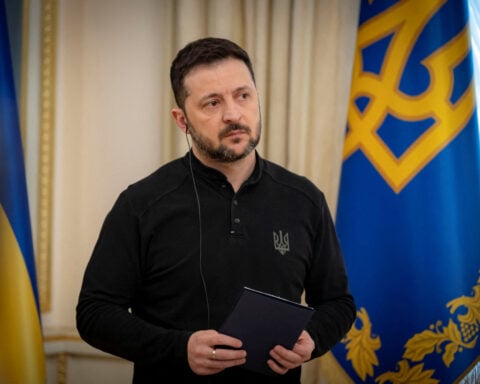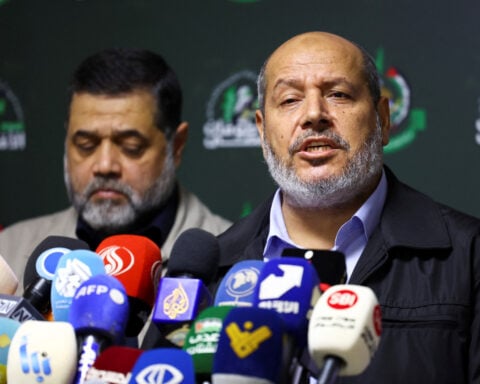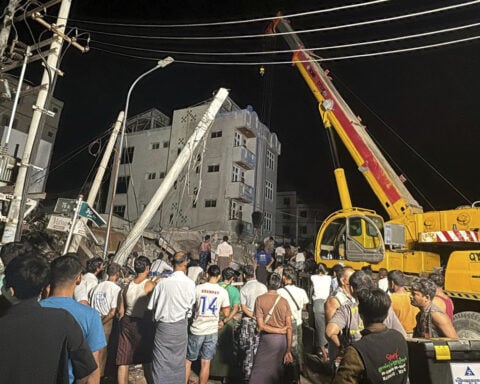KAHULUI, Hawaii (AP) — On a Monday morning in July, 11 months after the devastating Lahaina fires, the Kako’o Maui Resource Center was still busy.
Sunlight poured through big windows. A young man with a white flower tucked behind his ear sat behind a desk near the door, smiling as he greeted visitors. Hawaiian music played overhead, and a television screen looped images of colorful hibiscus and bright beaches. Two men were “talking story” in the waiting area, trading stories of what they each lost in the fire, as they waited their turn to receive the essential services offered here.
This converted storefront inside a Kahului strip mall is the hub of the Council for Native Hawaiian Advancement, or CNHA, a 23-year-old organization that has become a crucial leader in Maui’s recovery from the devastating fires that killed at least 102 people and displaced 12,000.
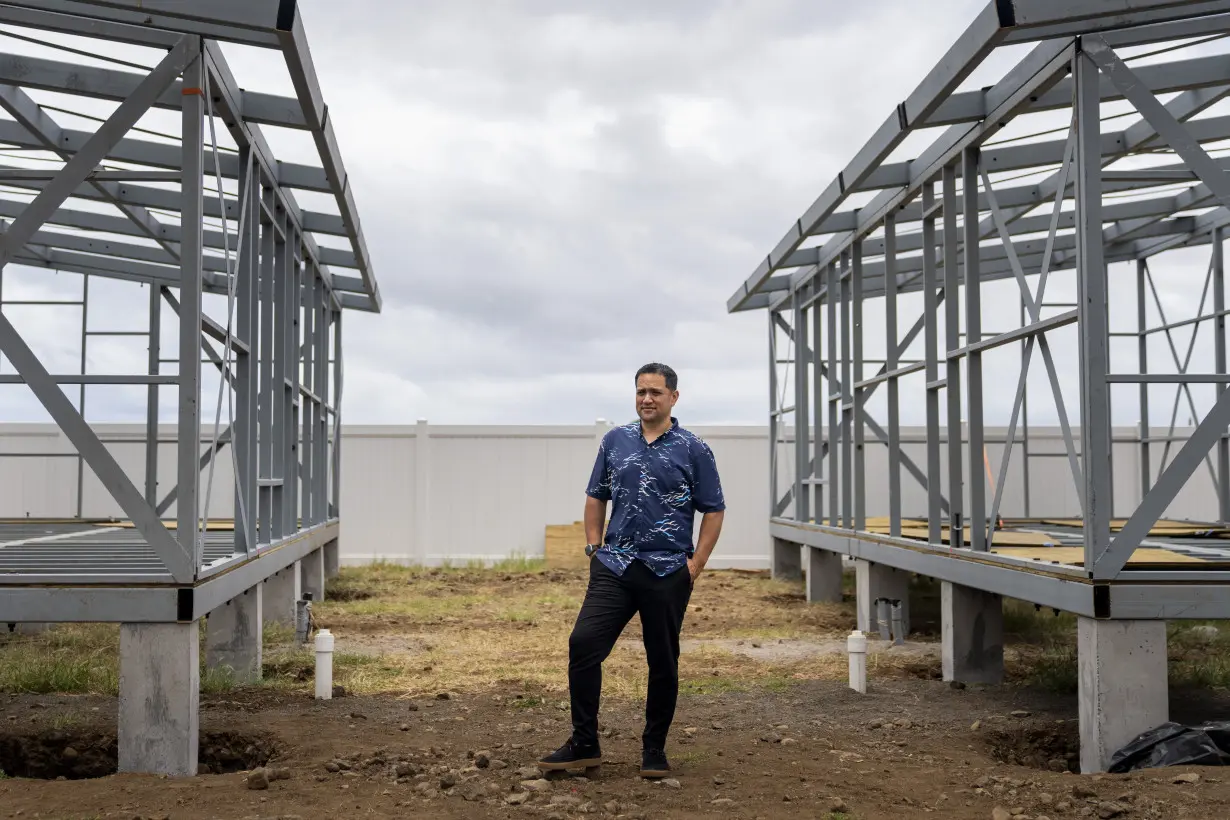
The center is divided into stations that address various needs: housing, financial assistance and mental health support. There are FEMA and Red Cross tables, but everything that happens here is led by locals. The staff themselves are Lahaina survivors, some of whom lost their own homes.
“We created this center as a way to culturally approach the disaster recovery,” said Kuhio Lewis, the council’s CEO. “The concept here is come in, feel the spirit of aloha, see somebody that you’re familiar with, so we can help you through the process.”
More than 6,000 families have been helped at the center, but this is only one piece of CNHA’s robust recovery project. It financially supports families who take in displaced loved ones, leases apartments for survivors, runs workforce development programs to train people for cleanup and construction jobs, and builds temporary housing for families.
Its work has helped fill the gap between Maui residents and federal and nonprofit agencies from the continental United States who struggled to grasp Hawaii’s landscape, culture, and the historical trauma its people already bore.
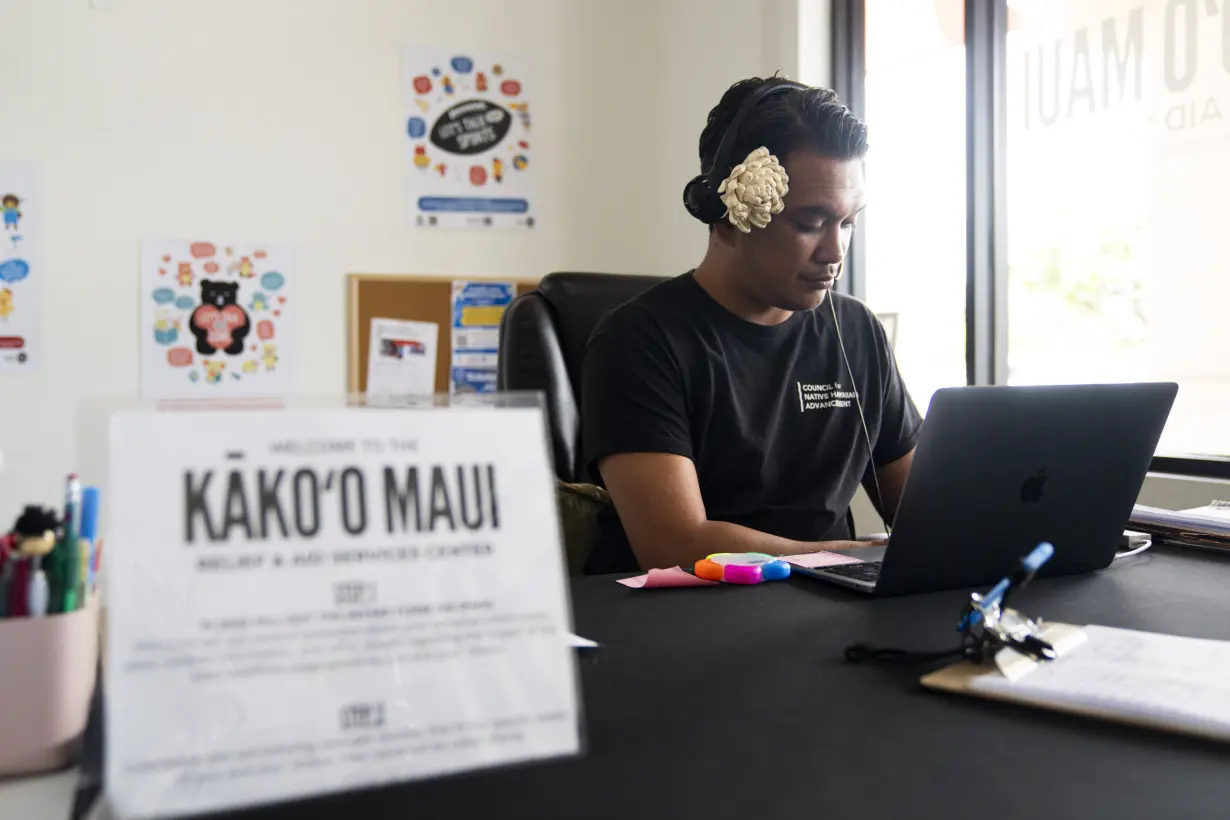
“We understand the needs of the community a lot better,” said Lewis.
The Associated Press spoke with Lewis a few weeks before the one-year anniversary of the Aug. 8, 2023 fires. He discussed what it was like to suddenly receive support from all over the world, how CNHA became one of the most crucial providers of housing for survivors, what he’s most proud of, and what still worries him about Maui’s long recovery.
His answers have been edited for clarity and length.
_____
Q: The flood of donations to Maui broke records. What was it like to receive such a sudden rush of support?
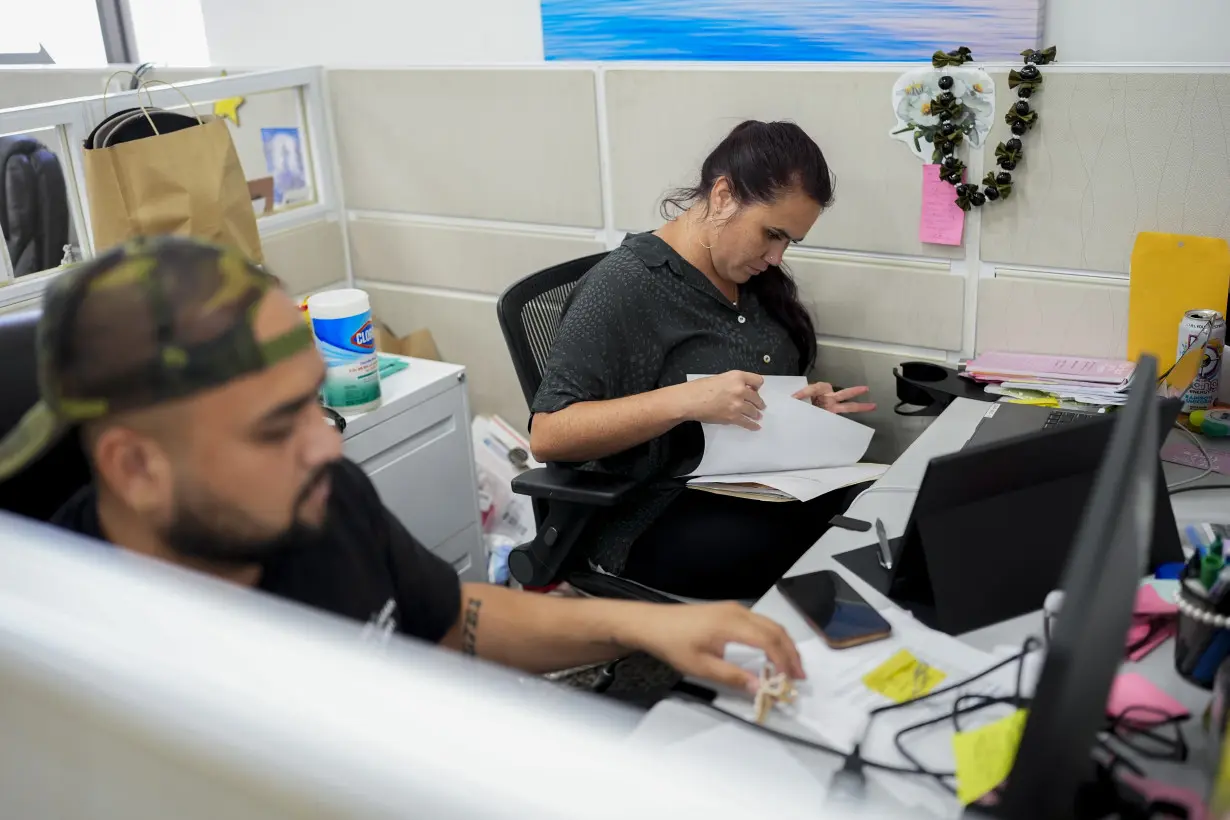
A: We’ve had over 22,000 donors from all over the world. They were small — as little as $5. There was a kid from another state who sent us a letter in the mail with $12 cash. He said he recycled cans and wanted to support. That’s the stuff you don’t forget. Maybe you got a $100,000 check earlier in the week, but that $12 meant a lot for that kid.
The in-kind donations must have been in the millions. All of the shipping costs for the building supplies. The stoves and microwaves and AC needed for the homes we’re building. The warehouse space for donations. School supplies. Everybody is throwing in.
Between the money we’ve raised, the money that we’ve gotten from Hawaii Community Foundation, which has been very supportive of our work, and the money we’ve gotten from the government, it’s over $40 million.
It’s getting harder to raise money. We’re still living off of what we raised in the first five months or so. But the money’s going to run out at some point. Which is partly why we’ve pivoted to housing. It has a longer lifespan.
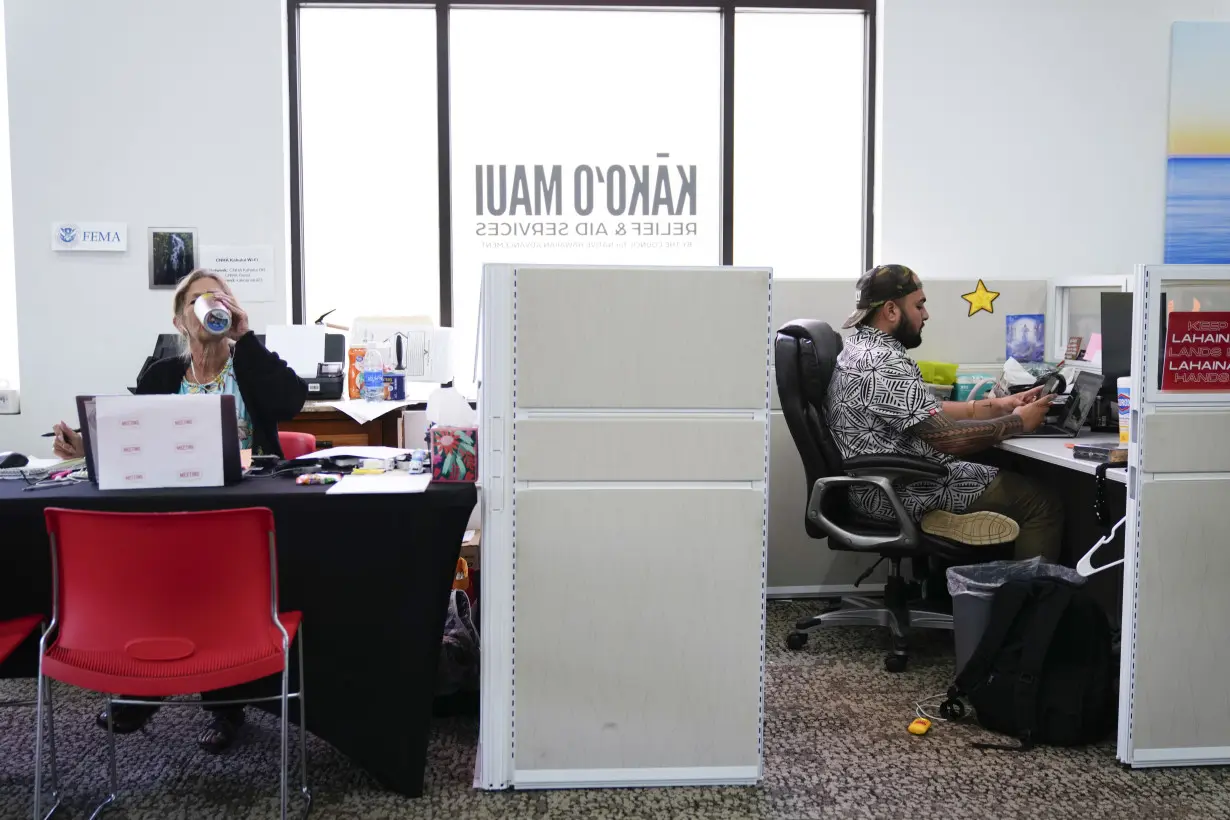
_____
Q: Some of CNHA’s most innovative programs have centered on housing. How did you craft your strategy?
A: When we first launched our resource center, the community was telling us, “We need housing.” There were 12,000 individuals that were displaced. That was around 9,000 families that needed someplace to go.
Many survivors were already staying with friends and family. That’s very normal in a Hawaii community, where you lean on your friends and family. So we came up with our first program, which was the Host Housing Support Program, where we provided financial help to those that were caretaking for survivors. That was unique.
As things started to progress, we started renting homes under our organization and subletting them to survivors to minimize the amount of back and forth that would have been required between survivors, who were already going through a lot, and landlords.
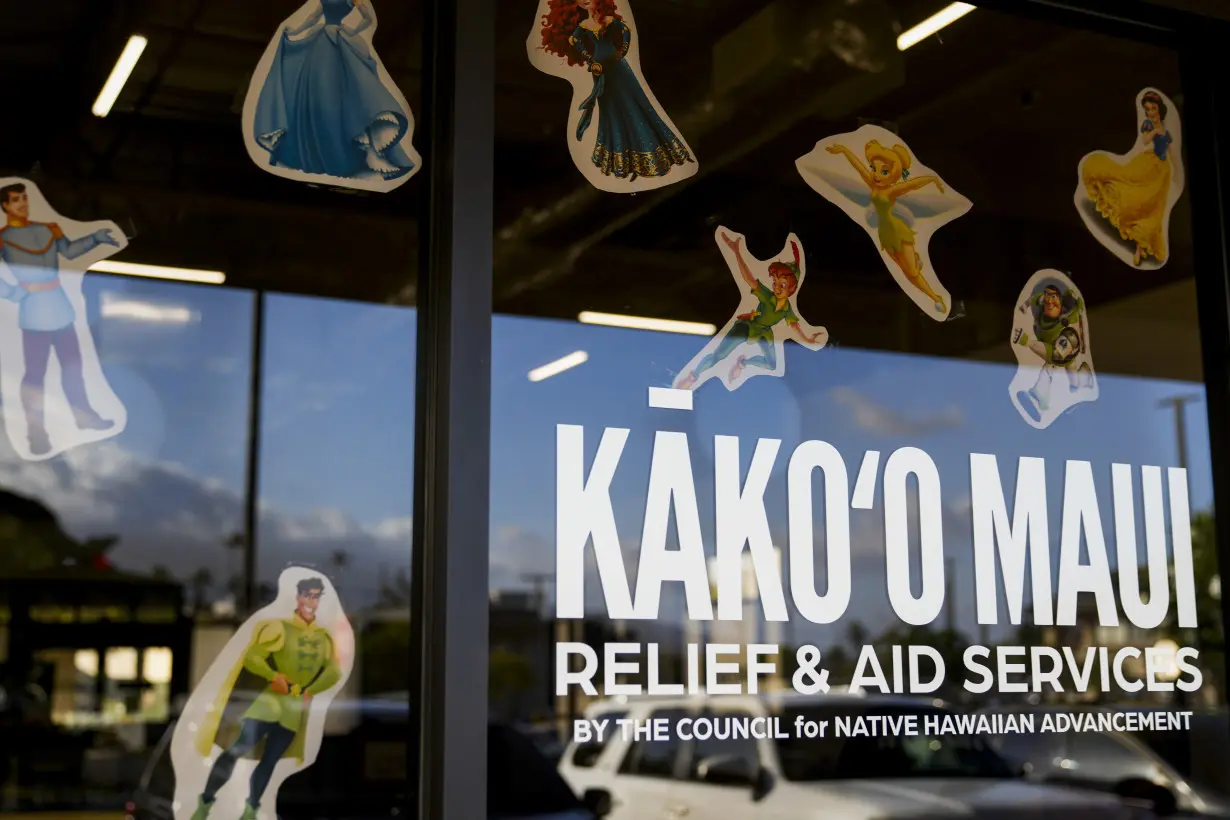
Over longer periods of time, the rental market is just too much to sustain. We ultimately landed on, we just have to start building houses. We’re building over 60 temporary two-bedroom units. These will serve as dwellings for at least five years.
The strong community sentiment was that they wanted to stay in West Maui, and they wanted to raise their kids in West Maui. It’s all towards the end of helping them repopulate back in Lahaina. While you’re going through the steps of rebuilding, at least you have someplace to live. But the idea here is to get them back to full normalcy.
_____
Q: CNHA wasn’t founded as a disaster recovery organization. Have you worried about straying too far from the council’s mission?
A: Our mission is to advance — culturally, politically, economically — Native Hawaiians. And we are doing that, because Native Hawaiians are leading this recovery.
It hasn’t taken us away from our mission, because at the end of the day, we’re for a thriving Hawaii. In this moment, I see our organization as Hawaiians helping to uplift Hawaii. This is our homeland. If we’re native to this place, we have a responsibility to take care of the people that live here, regardless of their ethnic background.
Sometimes we get too caught up in how to serve ourselves in our ethnic groups. That’s not who we are as a people, as a culture. It’s always been inclusive. And so this has returned us to that. We help everybody. It’s the spirit of aloha.
_____
Q: In many ways, Maui is only at the beginning of its recovery. At this stage, what worries you most?
A: One of the key things that I’m most concerned about is Hawaii’s fabric.
What makes Hawaii unique, compared to anywhere around the world, is the culture. And when you start to see mass exodus of the people, you start to change the fabric of Hawaii. That’s what’s at stake is the future of who Hawaii is as a people, as a place.
We’ve lost thousands already to this fire. They’ve moved off island, to other states. Even before the fire, we were seeing a mass exodus of families leaving for stability outside of Hawaii because the cost of living was just too high.
We need to address the housing situation on Maui. And in the end, what happened here has actually fast-tracked that conversation. Now you’re starting to see the policies to shift that trajectory.
We need people to stay home in Hawaii.
_____
Q: What are you most proud of?
A: It meant a lot to hand keys over to this young family that lost everything. I went up (to the 50-unit development being built in Kahului) the other day to check on the progress of the homes, and the kids were playing in the yard. They made their own little makeshift pool using a tarp, and they were just playing water.
We’ve been able to give keys to a number of families at this point, and we’ll continue to give those keys.
_____
Associated Press coverage of philanthropy and nonprofits receives support through the AP’s collaboration with The Conversation US, with funding from Lilly Endowment Inc. The AP is solely responsible for this content. For all of AP’s philanthropy coverage, visit https://apnews.com/hub/philanthropy.

 Trump has begun another trade war. Here's a timeline of how we got here
Trump has begun another trade war. Here's a timeline of how we got here
 Canada's leader laments lost friendship with US in town that sheltered stranded Americans after 9/11
Canada's leader laments lost friendship with US in town that sheltered stranded Americans after 9/11
 Chinese EV giant BYD's fourth-quarter profit leaps 73%
Chinese EV giant BYD's fourth-quarter profit leaps 73%
 You're an American in another land? Prepare to talk about the why and how of Trump 2.0
You're an American in another land? Prepare to talk about the why and how of Trump 2.0
 Chalk talk: Star power, top teams and No. 5 seeds headline the women's March Madness Sweet 16
Chalk talk: Star power, top teams and No. 5 seeds headline the women's March Madness Sweet 16
 Purdue returns to Sweet 16 with 76-62 win over McNeese in March Madness
Purdue returns to Sweet 16 with 76-62 win over McNeese in March Madness
